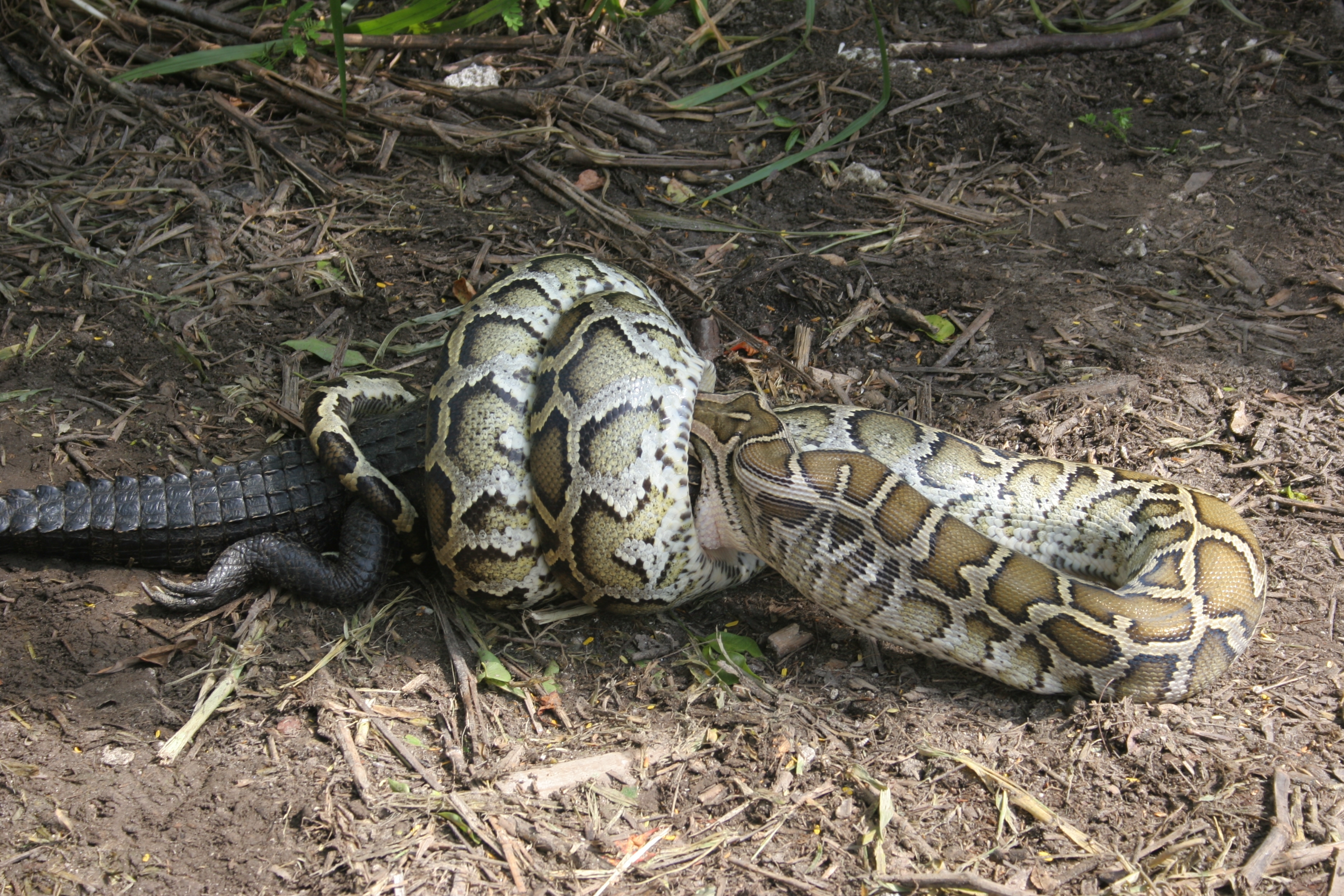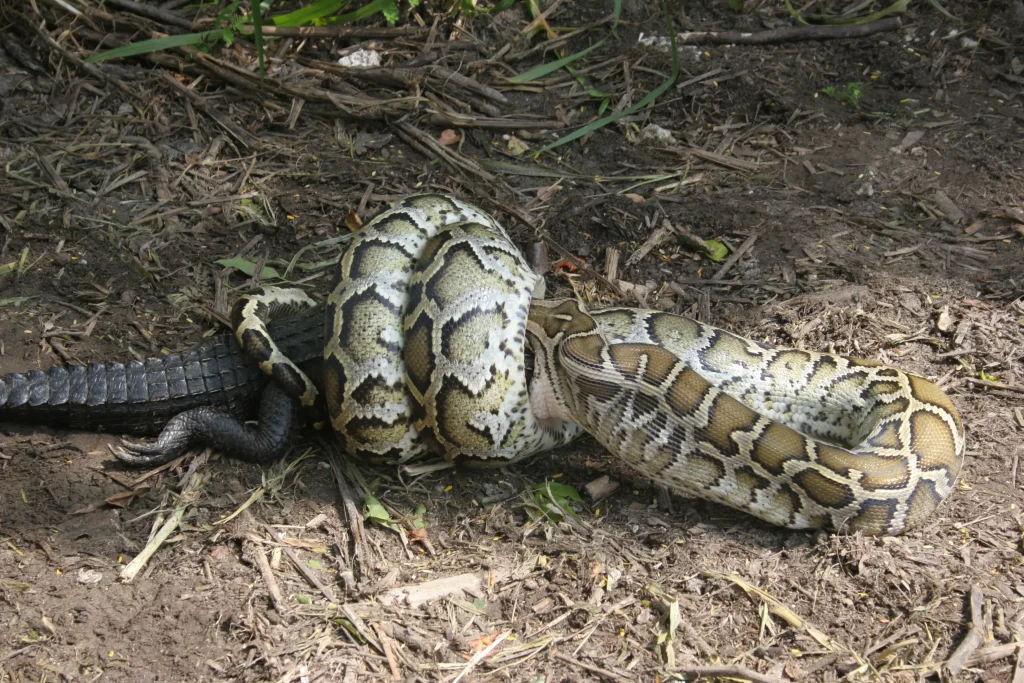The Everglades is a vast ecosystem that stretches over 1.5 million acres in Southern Florida. It is home to numerous plant and animal species that are found nowhere else in the world. However, the Everglades is facing a serious threat from an invasive species that has wreaked havoc on its delicate balance: the Burmese python.
Burmese pythons were first introduced to the Everglades in the 1980s, when they were released into the wild by pet owners who could no longer care for them. Since then, the population of these snakes has exploded, and they have become a major problem for the native wildlife of the region. In this article, we will explore the impact that Burmese pythons are having on the Everglades and what is being done to address this issue.

The Devastating Impact of Burmese Pythons in the Everglades
Burmese pythons are one of the most destructive invasive species in the world, and their impact on the Everglades is no exception. These large, non-native snakes have been thriving in the Florida wetlands since the 1980s, and their population has exploded in recent years. With no natural predators and an insatiable appetite, Burmese pythons are causing significant harm to the fragile ecosystem of the Everglades.
Overpopulation of Burmese Pythons
Burmese pythons are native to Southeast Asia, but they were introduced to the Everglades through the pet trade. Many owners released their snakes into the wild when they grew too large to handle, and these snakes quickly established themselves in their new environment. With no natural predators and plenty of prey, Burmese pythons have been able to reproduce at an alarming rate. The population of these snakes in the Everglades is estimated to be in the tens of thousands, and they are still spreading.
The overpopulation of Burmese pythons is causing a number of problems in the Everglades. They are competing with native predators for food, and they are eating many of the native species that are essential to the ecosystem. They are also preying on endangered species, such as the Key Largo woodrat and the Cape Sable seaside sparrow.
Destruction of Native Wildlife
Burmese pythons are opportunistic feeders, and they will eat just about anything they can catch and swallow. In the Everglades, they have been known to consume a wide variety of native wildlife, from small mammals to large birds and even alligators. This has had a major impact on the ecosystem, as many of these species are essential to the food chain. Without them, other species may suffer as well.
In addition to eating native wildlife, Burmese pythons are also outcompeting native predators for food. This includes species such as alligators and panthers, which are already facing a number of challenges in the Everglades. The overabundance of pythons is making it even more difficult for these species to survive.
Economic Impacts
The impact of Burmese pythons is not limited to the ecosystem of the Everglades. They are also having a significant economic impact on the region. The Everglades is a popular destination for tourism and recreation, and the presence of these snakes is deterring many visitors. In addition, the damage they are causing to the ecosystem could have long-lasting economic consequences, such as loss of revenue from fishing and hunting.
The cost of controlling the population of Burmese pythons is also a significant economic burden. The state of Florida has invested millions of dollars in efforts to eradicate these snakes, including hiring snake hunters and sponsoring python-catching contests. Despite these efforts, the population of Burmese pythons continues to grow.
Health Risks
Burmese pythons can also pose a health risk to humans. While attacks on humans are rare, they have been known to occur. These snakes are large and powerful, and they can easily overpower a human if they feel threatened. In addition, Burmese pythons are carriers of diseases such as salmonella, which can be transmitted to humans through contact with their skin or feces.
Environmental Impact
The impact of Burmese pythons on the environment is also significant. They are altering the food chain in the Everglades, which could have long-term consequences. In addition, their presence is causing changes to the physical environment, such as changes in water quality and vegetation. The full extent of these changes is not yet known, but they could have far-reaching effects on the ecosystem.
Control Efforts
Efforts to control the population of Burmese pythons have been ongoing for many years. These efforts include trapping and removing snakes, sponsoring python-catching contests, and hiring snake hunters. While these efforts have been somewhat successful in reducing the population of pythons, they have not been able to eradicate them completely.
There are also concerns about the effectiveness of these control methods. Some experts believe that trapping and removing snakes could actually make the problem worse by disrupting the social structure of the python population. Others argue that more aggressive measures, such as aerial hunting or the use of trained dogs, may be necessary to control the population.
Benefits of Burmese Pythons
While Burmese pythons are causing significant harm to the Everglades, there are some who argue that they may have some benefits as well. For example, some people believe that the presence of these snakes could help control the population of other invasive species, such as rats and mice. However, the negative impacts of these snakes on the ecosystem far outweigh any potential benefits.
Burmese Pythons vs. Native Species
Burmese pythons are not the only predators in the Everglades, and they are competing with a number of native species for food. Some experts believe that the presence of pythons could be contributing to the decline of these species, while others argue that the pythons are simply filling a niche in the ecosystem that was previously empty.
Regardless of the cause, it is clear that the presence of Burmese pythons is having a significant impact on the native species of the Everglades. Efforts to control their population will be essential to protect these species and preserve the delicate balance of the ecosystem.
Conclusion
Burmese pythons are a serious threat to the ecosystem of the Everglades, and their impact is far-reaching. They are causing significant harm to native wildlife, disrupting the food chain, and altering the physical environment of the wetlands. Efforts to control their population have had some success, but more aggressive measures may be necessary to eradicate them completely. Without action, the damage caused by these snakes could have long-lasting consequences for the environment, the economy, and public health.
Frequently Asked Questions
What problems are Burmese pythons causing in the Everglades?
Burmese pythons are causing a range of problems in the Everglades. They are an invasive species that has been introduced to the area, and they have no natural predators in this ecosystem. This means that they are able to reproduce and spread rapidly, which has led to a number of negative impacts on the local wildlife.
One of the main problems caused by Burmese pythons is that they are preying on native species. This includes birds, mammals, and reptiles, many of which are already endangered. The pythons are also competing with other predators for food, which can disrupt the balance of the ecosystem and lead to further declines in native populations.
Another problem caused by Burmese pythons is that they are altering the physical environment of the Everglades. They are able to move through a range of habitats, including wetlands and upland areas, which means that they can impact a wide variety of ecosystems. In addition, they are known to disturb soil, vegetation, and water sources, which can have negative impacts on other species that rely on these resources.
Overall, the presence of Burmese pythons in the Everglades is causing significant ecological damage and threatening the survival of many native species.
Will The Burmese Python Problem In The Florida Everglades Ever Be Resolved
In conclusion, the Burmese pythons have caused significant harm to the Everglades ecosystem. They have become a major threat to the natural balance of the region, as they have no natural predators and are thriving in the area. The invasive species has caused a decline in the population of native species, leading to potential extinction. Additionally, the Burmese pythons have been found to carry diseases that can infect other animal species in the area.
The management of this issue is crucial, as the Burmese python population continues to grow. The government and conservation organizations have implemented various strategies to control their numbers, including hunting and trapping. However, these methods have proven to be difficult and have not been entirely successful in mitigating the problem.
Overall, it is clear that the Burmese pythons have caused significant damage to the Everglades ecosystem and require immediate action to be managed effectively. It is essential that we continue to study and understand the impact of invasive species on our environment, and take necessary measures to prevent similar situations from occurring in the future.


